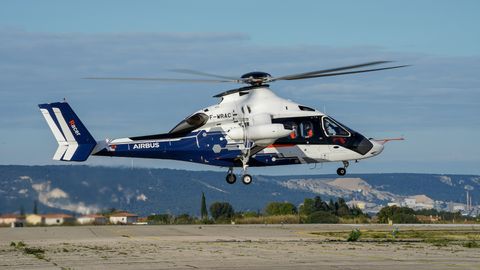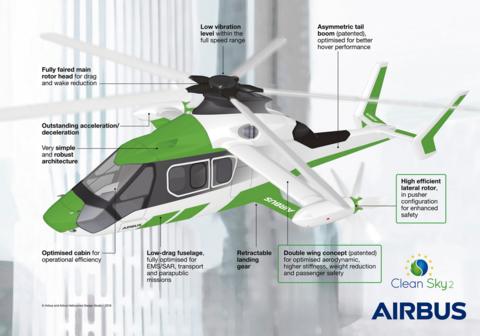Airbus has introduced a groundbreaking new aircraft called the Racer, designed to expedite flight times for emergency responders by combining the best features of helicopters and airplanes. The Racer, which stands for Rapid and Cost-Effective Rotorcraft, features airplane-like wings, forward-facing rotors, and helicopter-style top blades, giving it a unique hybrid appearance.
First Public Demonstration
For the first time, Airbus showcased its one-off working demonstration model of the Racer in Marseille, France. This event follows the release of new flight images and videos earlier in the week, highlighting the Racer’s capabilities. The aircraft demonstrated its ability to take off and land vertically like a helicopter, eliminating the need for a long runway. Notably, the Racer successfully completed its maiden flight in April.
Clean Sky 2 Collaboration
In an email to The Verge, Laurence Petiard, head of external communications at Airbus Helicopters, shared that a special ceremony was held for the company’s partners in the Clean Sky 2 project. This initiative involves collaboration with 40 partners across 13 European countries. Attendees at the event witnessed the Racer in both flight and static display, marking a significant milestone for the project.
Environmental and Performance Goals
The European Union’s Clean Sky 2 program aims to promote the development of low-emission air transport solutions, ensuring the competitiveness of Europe’s aeronautical industry on the global stage. Julien Guitton, head of the Clean Sky 2 project, emphasized the balance between high-speed performance and environmental impact. Simulations indicate that the Racer can reduce fuel consumption and CO2 emissions by 20% compared to conventional aircraft of similar weight, meeting the stringent requirements of Clean Sky 2.

Hybrid Aircraft Development

Airbus has a history of developing hybrid test aircraft, including the X3 demonstrator from 2010. While Boeing’s V-22 Osprey, equipped with tilt-rotors, achieves higher flight speeds, it is primarily designed for military purposes and is considerably bulkier. Additionally, vertical take-off and landing (VTOL) aircraft have been in development for years, yet the anticipated era of flying taxis has not yet materialized.
The Racer represents a significant advancement in hybrid aircraft technology, promising faster response times for emergency services while aligning with environmental sustainability goals. As the Racer continues to develop, it may pave the way for new innovations in air travel and transport.











